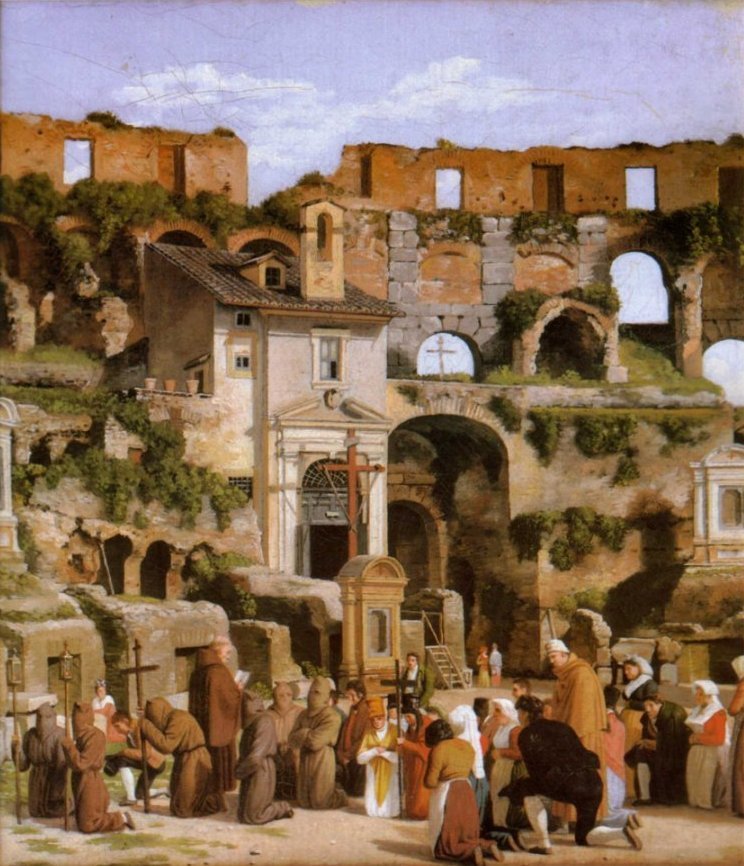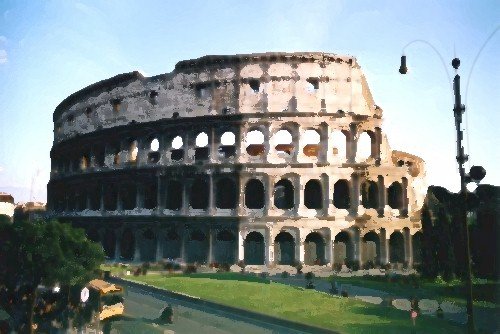The University of Sydney News – 24 February 2000
Passion plays that inspired violence in Rome – By Anne Sarzin

When Associate Professor Nerida Newbigin travels to Rome in September to meet the Pope at the Roman Church’s Jubilee – marking the 2,000th anniversary of the birth of Christ – she will also get a chance to bring her own research alive.

Professor Newbigin will walk in the processional footsteps of people who produced passion plays in the Colosseum. These religious plays were sometimes highly inflammatory, inspiring hatred of the Jews. They were prohibited in 1539 by Pope Paul III after one provoked violence in the Jewish Quarter.
Professor Newbigin will attend a Jubilee conference in Viterbo before presenting the proceedings to the Pope on a Sunday dedicated to university teachers. While in Rome she will follow the processional route taken by members of the 15th to 19th century Confraternity of the Gonfalone, a male-dominated institution for the laity that played a significant role in Roman life.
In collaborative research with Barbara Wisch, Professor of Art History at the State University of New York, Professor Newbigin, of the University’s Department of Italian, has examined the literary and historical records of the Confraternity of the Gonfalone.
For a short period between 1490 and 1539, the Confraternity produced plays for Easter in the Colosseum in Rome. They also ran a hospital for pilgrims, gave dowries to respectable virgins, looked after the sick and performed pious deeds on special feast days. “It was a grassroots expression of devotion and spirituality,” Professor Newbigin said.
Professor Newbigin, who worked previously in the area of Florentine religious drama, has researched the Gonfalone’s records contained in the Vatican Secret Archives. When the Gonfalone disbanded in the 19th century, the Church took over their properties and archives.
The Confraternity used the Colosseum as a theatre for their dramatic performances. The crowd, possibly as many as 70,000, assembled in the arena and the players performed among the ascending rows in the amphitheatre. “They put a lot of effort into it. Their statutes say that the Confraternity was formed for the purpose of doing plays properly and in a dignified manner,” Professor Newbigin said.
The plays were re-enactments of the events of the Holy Week of Easter – the miracles, temptation, passion, and resurrection of Christ. In a typical year, the Gonfalone assembled on Good Friday and walked in devout procession from the Santa Lucia Church, through the Jewish Quarter, to the Colosseum. At the end of the play, they carried an actor representing the dead Christ back from the Colosseum to their church, singing hymns and flagellating as they walked.

The Chapel of Santa Maria Della Pieta in the Colosseum, used by the Confraternity of the Gonfalone for its plays, was demolished in the course of archaeological restorations in the 19th century.
“The history of the Jewish community in Rome, which was there before the birth of Christ, is fascinating,” Professor Newbigin said. “In a dramatic text printed in 1501, we find that a series of choruses added to the basic text of the play are against the Jews, and arouse hatred of the Jews. We have evidence that in other cities the Jews were advised to stay indoors during Lent, the six weeks before Easter, when preachers whipped up the populace to a fever pitch. Although we can’t find a document that states exactly the nature of what happened in 1539, we do know that the Gonfalone used such preachers.
“In 1539, as the Confraternity passed through the Jewish Quarter, a riot erupted. The violent incident prompted Pope Paul III to put an end to the plays, despite the Confraternity trying several times to start them again. In subsequent years, their procession went to St Peter’s, there were no plays and they no longer passed through the ghetto.

“The church always had an ambiguous relationship with the Jews. Based on their reading of the Book of Revelations, the church saw it as the Pope’s responsibility to protect the Jews whom, they believed, should be present at the end of the world. The rhetoric associated with the creation of the Roman ghetto in the 1550s suggests the Jews were placed in that small space for their own good.”
The Colosseum, which featured so prominently as the space where the Gonfalone dramas were enacted, was begun by Vespasian in 71AD. In 80AD inaugural gladiatorial games were held there. But a careful reading of 18th and 19th century sources reveals that, contrary to popular myth, Christians were not fed to the lions.
“Although the amphitheatre was a scene of bloodthirsty entertainment, it was not a site of mass persecutions of Christians,” Professor Newbigin said. “No doubt there were some Christians among the slaves, prisoners and gladiators, who fought with beasts in the Colosseum. The idea of the Colosseum as a place of mass persecution of Christians was cultivated in the 17th century.”
Address any comments to:
mailto:%20media@publications.usyd.edu.au
